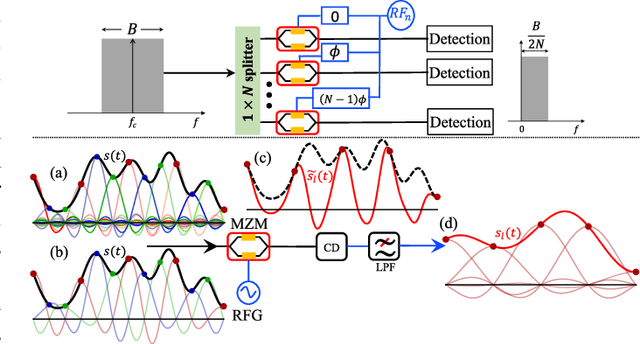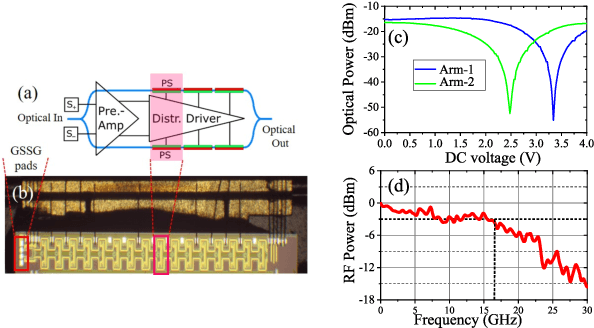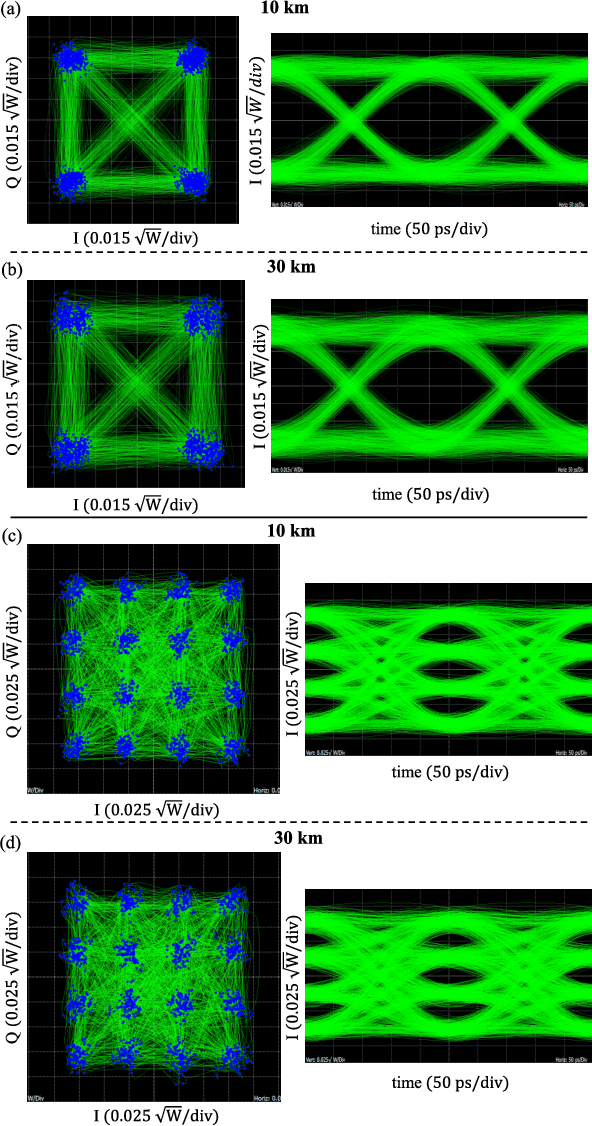Arijit Misra
Reconfigurable and Real-Time Nyquist OTDM Demultiplexing in Silicon Photonics
Oct 19, 2021



Abstract:We demonstrate for the first time, to the best of our knowledge, reconfigurable and real-time orthogonal time-domain demultiplexing of coherent multilevel Nyquist signals in silicon photonics. No external pulse source is needed and frequencytime coherence is used to sample the incoming Nyquist OTDM signal with orthogonal sinc-shaped Nyquist pulse sequences using Mach-Zehnder modulators. All the parameters such as bandwidth and channel selection are completely tunable in the electrical domain. The feasibility of this scheme is demonstrated through a demultiplexing experiment over the entire C-band (1530 nm - 1550 nm), employing 24 Gbaud Nyquist QAM signals due to experimental constraints on the transmitter side. However, the silicon Mach-Zehnder modulator with a 3-dB bandwidth of only 16 GHz can demultiplex Nyquist pulses of 90 GHz optical bandwidth suggesting a possibility to reach symbol rates up to 90 GBd in an integrated Nyquist transceiver.
Optical Channel Aggregation by Coherent Spectral Superposition with Electro-Optic Modulators
Sep 03, 2021



Abstract:As the bit rates of routed data streams exceed the throughput of single wavelength-division multiplexing channels, spectral traffic aggregation becomes essential for optical network scaling. Here we propose a scheme for all-optical aggregation of several low bitrate channels to fewer channels with higher spectral efficiency. The method is based on optical vector summation facilitated by coherent spectral superposition. Thereby it does not need any optical nonlinearities and is based on linear signal processing with an electro-optic modulator. Furthermore, optical phase tuning required for vector addition can be easily achieved by a phase tuning of the radio frequency signal driving the modulator. We experimentally demonstrate the aggregation of two 10 Gbaud BPSK signals into one 10 Gbaud QPSK and one 10 Gbaud PAM-4 signal, the aggregation of two 10 Gbaud QPSK signals into 10 Gbaud QAM-16, as well as the aggregation of sinc-shaped Nyquist signals. The presented concept of in-line all-optical aggregation demonstrates considerable improvement in network spectrum utilization and can significantly enhance the operational capacity with reduced complexity. It provides a new way for realizing the flexible optical transmission of advanced modulation format signals, and suits for future dynamically reconfigurable optical networks. Since the method is based on linear signal processing with electro-optic modulator, integration into any integrated photonic platform is straightforward.
 Add to Chrome
Add to Chrome Add to Firefox
Add to Firefox Add to Edge
Add to Edge